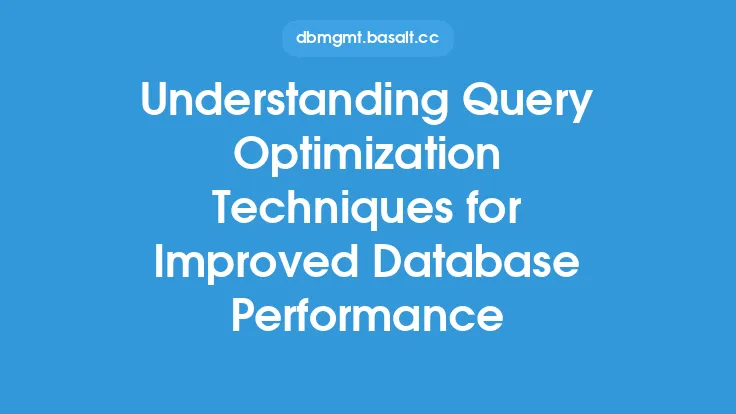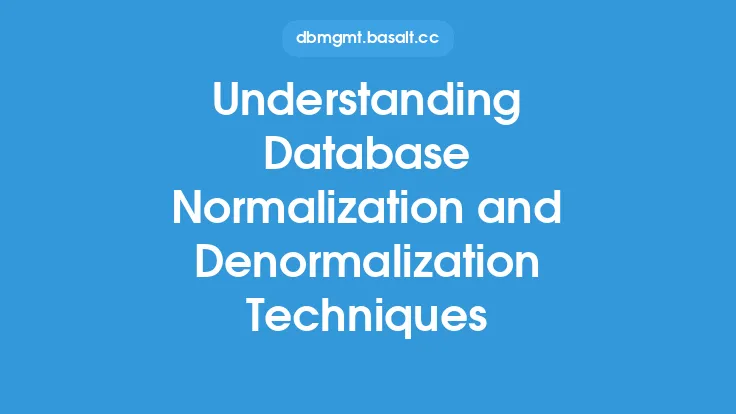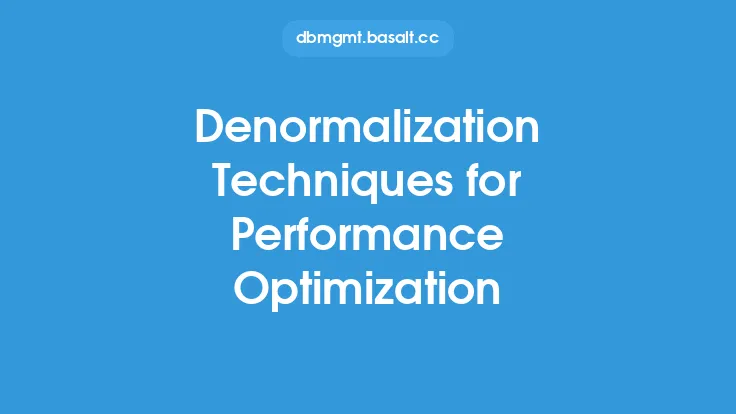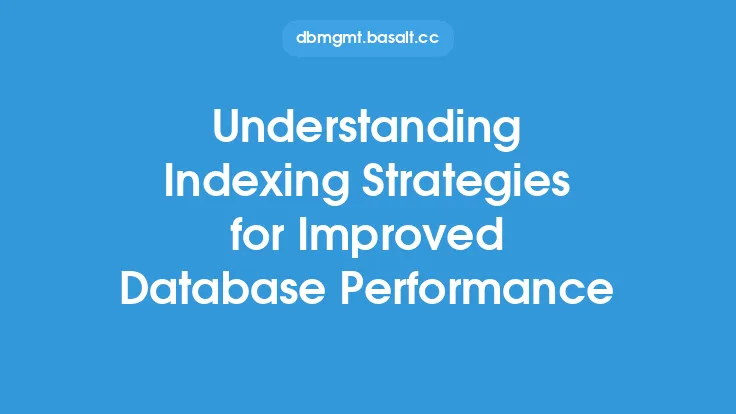Database design is a crucial aspect of any application, and one of the key considerations is how to optimize performance. While normalization is often the primary goal, denormalization techniques can also play a significant role in improving database performance. In this article, we will delve into the world of denormalization techniques, exploring what they are, how they work, and when to use them.
Introduction to Denormalization
Denormalization is the process of intentionally deviating from the principles of normalization in order to improve the performance of a database. Normalization is the process of organizing data in a database to minimize data redundancy and dependency, which can lead to data inconsistencies and anomalies. However, in some cases, normalization can lead to slower query performance, as the database has to perform more joins and calculations to retrieve the required data. Denormalization techniques aim to address this issue by allowing some degree of data redundancy and dependency, in order to improve query performance.
Types of Denormalization
There are several types of denormalization techniques, each with its own strengths and weaknesses. Some of the most common types of denormalization include:
- Pre-aggregation: This involves pre-calculating and storing aggregate values, such as sums and averages, to avoid having to calculate them on the fly.
- Pre-joining: This involves storing the results of frequently performed joins, to avoid having to perform the join operation every time the data is queried.
- Data duplication: This involves storing duplicate copies of data, to avoid having to retrieve it from multiple tables.
- Summary tables: This involves creating summary tables that contain aggregated data, to avoid having to query the underlying tables.
Benefits of Denormalization
Denormalization techniques can offer several benefits, including:
- Improved query performance: By reducing the number of joins and calculations required, denormalization can significantly improve query performance.
- Reduced latency: Denormalization can reduce the latency associated with querying a database, making it more responsive to user requests.
- Increased scalability: Denormalization can help to improve the scalability of a database, by reducing the load on the database and allowing it to handle more concurrent requests.
Challenges of Denormalization
While denormalization techniques can offer several benefits, they also present some challenges. Some of the most significant challenges include:
- Data consistency: Denormalization can lead to data inconsistencies, as the same data may be stored in multiple locations.
- Data redundancy: Denormalization can lead to data redundancy, as the same data may be stored in multiple locations.
- Maintenance complexity: Denormalization can increase the complexity of maintaining a database, as the relationships between different tables and data elements must be carefully managed.
Best Practices for Denormalization
To get the most out of denormalization techniques, it is essential to follow some best practices. Some of the most important best practices include:
- Carefully evaluate the trade-offs: Denormalization involves a trade-off between query performance and data consistency, so it is essential to carefully evaluate the benefits and drawbacks of denormalization.
- Use denormalization judiciously: Denormalization should be used judiciously, as it can lead to data inconsistencies and redundancy if not managed carefully.
- Monitor and maintain the database: The database must be carefully monitored and maintained, to ensure that the denormalization technique is working effectively and that data consistency is maintained.
Common Use Cases for Denormalization
Denormalization techniques are commonly used in a variety of scenarios, including:
- Data warehousing: Denormalization is often used in data warehousing, where the goal is to improve query performance and support complex analytics.
- Real-time analytics: Denormalization is often used in real-time analytics, where the goal is to provide fast and accurate insights into current events.
- High-traffic websites: Denormalization is often used in high-traffic websites, where the goal is to improve query performance and support a large number of concurrent requests.
Conclusion
Denormalization techniques can be a powerful tool for improving database performance, but they must be used carefully and judiciously. By understanding the benefits and challenges of denormalization, and by following best practices, developers and database administrators can use denormalization to improve query performance, reduce latency, and increase scalability. Whether you are working on a data warehousing project, a real-time analytics application, or a high-traffic website, denormalization techniques can help you to achieve your goals and provide a better user experience.





